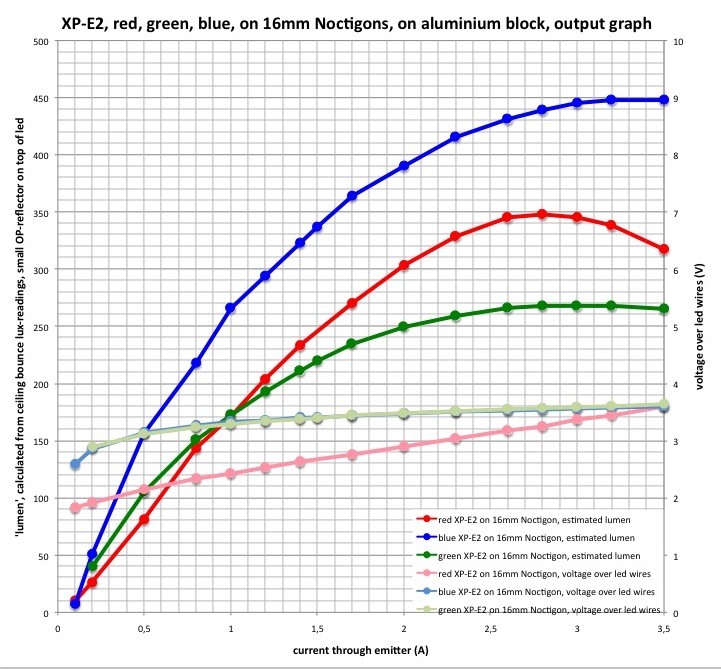TK, I am glad to see this post. I have done a lot of work coming up with the ultimate tail light for bikes.
I have come up with a very good setup with standard drivers. All the work so far on custom drivers have focused on solid modes since the blinky modes are so unpopular.
The drivers I run are the 17-mode NANJG drivers found at various outlets. I use two modes for most daytime commutes: the normal hyperflash, and the excellent Police mode.
Efficiency is the key element I was trying to achieve. A 2hz flash would be great. I find that the most efficient mode is the Police mode - 5 rapid flash and a pause. The normal strobe is about 50% duty cycle. Oddly enough, the built in 1/2hz flash is less efficient than the hyper-flash (strobe). Police mode is about 35-40% duty cycle.
I also found the XM-L to be most consistent. The driver supplies the correct voltage until the last 5 minutes of battery life. This is based on 1050ma (3x 7135). Adding another 7135 doesn’t seem to make a significant difference in daylight. Reducing by one, however, does.
I also found that a single 7135 with constant drive and running a mode on two more really reduced the effectiveness of the flash. I use this for a headlight, but on a tail light, in daytime, no use.
How do you plan to get around the lower Vf of the red LED? I have been curious about that. It seems a lot of energy is going to go into the current limiters and you might even end up with a heat problem. I will be curious to hear your findings on this. Obviously, a red LED would be perfect, but I suspect these will require a buck driver in the long run.
I solved the red tint using Rubilyth film. On glass, they stick very well, on plastic, just maintain the backing material. If the emitter is close to the material, it will require replacement every couple of years as it degrades from the heat.
Last, I absolutely recommend spherical lenses! The best host I have found is the Tank 007 TK736. Lots of clones for this one, but the built of the TK736 is great and easily modified for the larger 26mm lens. This really give a great sight cone angle and evens out the beam strength. You don’t get that “on-axis” blinding that you do with focused beams. Rather, the cone of light is very even to nearly 90 degrees (inclusive). The wonderful thing about using the spherical lens is that they are very efficient when the emitter is close to the lens. It is focusing that makes them less than desirable in normal flashlight use. Since, as cyclists, we prefer the defocus mode, we gain on the efficiency factor.
Battery capacity has been the other boon to the quest. With good cells, runtimes can now reach a full day’s ride. I always run 2 in the back in order to have redundancy.
I will be following this thread with great interest in what kind of modes you come up with. I still cannot see myself programming the PM but you do give me hope that a bike friendly efficient setup can be achieved. Let me know if you need some evaluation done.




